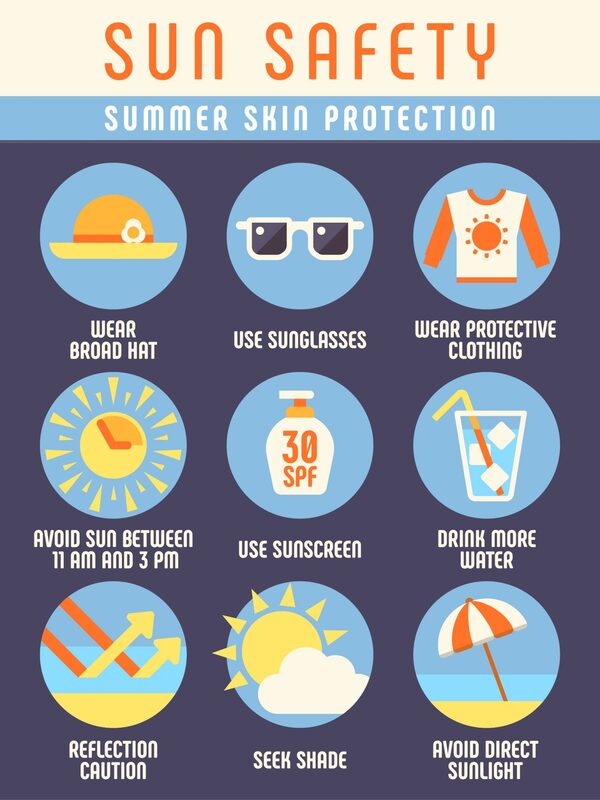First Community Financial Group, Inc. Blog |
|
Wildfires are fast-moving natural disasters that typically happen without warning. They'll begin in areas like forests or grasslands, and are devastating to not only wildlife, but also communities. According to the Natural Fire Protection Association (NFPA), more than 72,000 U.S. communities are at risk for a wildfire.* If you know your neighborhood is at risk, there are steps you can take to protect your home and keep your loved ones safe!
Before a Wildfire: Prepare Your home
* https://www.nfpa.org/Public-Education/Fire-causes-and-risks/Wildfire/Wildfire-safety-tips Foremost Insurance Group
0 Comments
Remember, high winds can be the main cause wreaking havoc on your belongings.
Click here to read more! Understanding Hurricane and Flood Coverages Hurricane season began on June 1st! Does your current insurance cover wind or flood damage? Get prepared, review your policy today. https://bit.ly/3y5Zvy9
#hurricanepreparedness Many memories in Texas are made camping, and a lot of those might include being in a tent or even a camper. Travel trailer camping is popular for good reasons such as space, towability and accessibility. But whether you're new to the concept or have already had a few adventures (including tailgating!), these handy tips can serve as reminders for a better outdoor experience:
And before you head out on the road in Texas and abroad with your travel trailer, remember you can always speak with us at First Community Financial Group to shop for coverages so you can protect the things you tow. We are a Foremost and Progressive agent! Rip Current Awareness Week was officially at the beginning of March this year. But, it made me think, don't we need to know this all the time? Not just during spring break? The answer… yes, it's very important. Whether an ocean or a great lake, rip currents are powerful and can be deadly. The most obvious danger of rip currents is that it can pull you out to sea further than you can swim back to shore. Even when it doesn't pull its victims far out, many panic and drown. With the Memorial Day holiday coming up this Monday, it's a good time to review how to stay safe and not panic at the beach or the lake.
Rip currents can be found on many surf beaches every day. Rip currents most typically form at low spots or breaks in sandbars, and also near structures such as groins, jetties and piers. The definition of rip current is: A powerful channel of water that flows away from the shore. They can be narrow or more than 50 yards wide. The United States Lifesaving Association (USLA) estimates that rip currents account for over eighty percent of all beach rescues and over 100 deaths annually at our nation's beaches. Signs that a rip current is present are difficult for the average beachgoer to identify. Look for differences in the water color, water motion, incoming wave shape or breaking point compared to adjacent conditions. So, what do you need to know before you go to the beach? The USLA offers some good tips and precautions that every swimmer should head or at least hear. Rip current myth debunked: A rip current is a horizontal current. Rip currents do not pull people under the water—they pull people away from shore. Drowning deaths occur when people pulled offshore are unable to keep themselves afloat and swim to shore. This may be due to any combination of fear, panic, exhaustion, or lack of swimming skills. How to avoid and survive rip currentsLearn how to swim!
Your safety is number one to us. Stay safe on the water and on your boat. And PLEASE wear a life jacket! Content provide by Foremost Insurance (Source: United States Lifesaving Association and National Weather Service, Illustration Photo courtesy of the U.S. Army Corps of Engineers Field Research Facility at Duck, NC.) July may be UV Safety Month, but that doesn't mean I'm going to not care about UV safety the other 11 months of the year. Sun safety needs to be considered every day—even if it is cloudy outside. And in Texas, that starts early!
As the saying goes--your skin is your largest organ, you better take care of it. Doing so is fairly simple; and you can probably recite the following recommendations from the Centers for Disease Control and Prevention (CDC) without even clicking on the link. Indulge me while I reiterate:
According to the American Cancer Society, skin cancer (including melanoma and basal and squamous cell) is by far the most common cancer diagnosed every year. Even though a few physical traits can make some people more susceptible than others, anyone can get it. Before you go outside, whether you're on your boat, camping in the woods or gardening in the back yard, find out what your UV index will be for the day. That way you can take the appropriate precautions to keep your skin healthy. Join me under my sun umbrella; the view's quite nice here. Content provided by Foremost Insurance. It's mosquito season here in East Texas and we're all looking forward to fun parties and get-togethers in our backyard, but with that comes a flying pest that's a pain for most - mosquitoes! However, just because these insects are a nuisance, that doesn't mean you have to stay inside and not enjoy summer. We've compiled a list of 10 tips and tricks that are sure to keep mosquitoes away from your yard.
Looking for A Better Insurance Experience®? First Community Financial Group is a Foremost Ins. agency. Click the Contact button at the top of the page for a free quote today! The wind in your hair, the sun on your face, and the open water in front of you. Sound appealing? Then you might want to join the ranks of boat owners all over the country. But before you cut through that clear blue water, there are some things you may want to keep in mind. Whether you're buying a fishing boat, cabin cruiser, pontoon or speed boat, different components like cost, horsepower, weight capacity or onboard storage may prove to be more important to you than others.
Answer these questions before going boat shopping: What are you hoping to use your boat for? All boat styles have a different design tailored to the use. Speed boats may be better for tubing and water skiing but wouldn't hold as many people or be as suited for fishing as a dedicated fishing boat or a pontoon. Maybe you'll want to sail or spend time living on the open water in a houseboat. There are so many different varieties of boats, brands and manufacturers, so make an informed decision on which one is right for you. What's your budget? This may help decide whether to buy a used boat. According to Discover Boating, new boats depreciate anywhere between 25%-33% immediately after leaving the dealer's lot. So, if you buy a used boat, someone else has already paid that depreciation cost - more boat for fewer dollars! However, buying a new boat will offer a warranty, the newest technology, and that nice shiny look as you move across the water - the choice is up to you! How many people are you hoping to go on your boating excursions with? The capacity on personal fishing boats is generally smaller than a pontoon boat, which are made to hold anywhere between 8-15 adults comfortably. What type of equipment will you want onboard? Here's some suggestions:
Will your car be able to tow your boat? A 20-foot boat trailer can range from 600 to 1,000 pounds, and most boats in this size range hover in the 4,000-5,000 pound range.* This means that you'll want an SUV or truck that is rated to tow between 4,500-6,000 pounds in total. Where are you placing your boat in the off-season? Having storage for your boat during the colder months is important and must be planned ahead. Some may place their boat in their garage, outside of their garage or in a separate storage space. And a few other components to consider…
No matter what you decide, get out there, matey, and enjoy the open seas! Looking for boat insurance? Get a quote today by calling 888-244-8092 to speak with a licensed agent or find a Foremost insurance agent near you. Or contact us at First Community Financial Group. We are a Foremost agency! Content provided by Foremost Insurance. |
Contact Us(936) 327-4364 Archives
July 2024
Categories
All
|











 RSS Feed
RSS Feed
